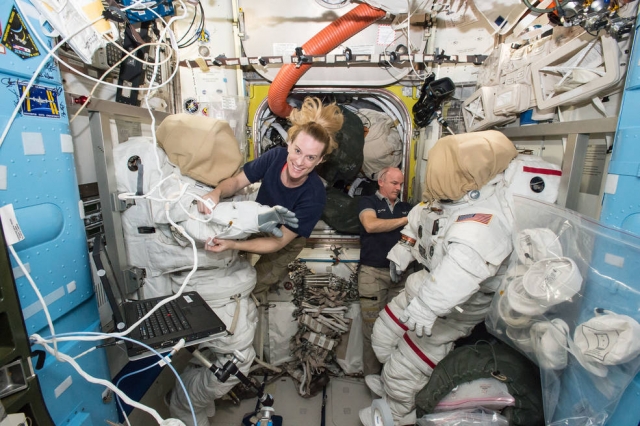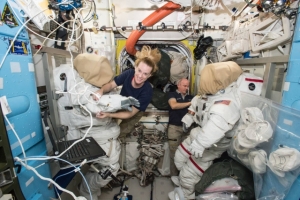NASA Astronaut Kate Rubins, Crewmates to Discuss Upcoming Spaceflight
NASA astronaut Kate Rubins will discuss her upcoming second mission to the International Space Station, along with cosmonauts Sergey Ryzhikov and Sergey Kud-Sverchkov of the Russian space agency Roscosmos, during a news conference at 4 p.m. EDT Wednesday, July 1, from NASA’s Johnson Space Center in Houston.
The news conference will be broadcast live on NASA Television and on the agency’s website.
Rubins and her crewmates will live and work aboard the station for six months following an Oct. 14 launch on their Soyuz MS-17 spacecraft from the Baikonur Cosmodrome in Kazakhstan. They will join station commander Chris Cassidy of NASA and cosmonauts Anatoly Ivanishin and Ivan Vagner for an eight-day handover before the Expedition 63 crew returns to Earth on Oct. 22. After Cassidy’s departure, Ryzhikov will become Expedition 64 commander.
During Rubins’ mission, the crew of the first operational crewed flight of the SpaceX Crew Dragon spacecraft – including NASA astronauts Michael Hopkins, Victor Glover, Jr., and Shannon Walker, as well as Soichi Noguchi of the Japan Aerospace Exploration Agency (JAXA) – will spend six months aboard the station.
Among some of the hundreds of experiments ongoing during her mission, Rubins will conduct research using the Cold Atom Lab to study the use of laser-cooled atoms for future quantum sensors, and work on a cardiovascular experiment that builds on an investigation she completed during her previous mission. During her first expedition, Rubins helped advance important science and research and became the first person to sequence DNA in space.
Born in Farmington, Connecticut, and raised in Napa, California, Rubins was selected as a NASA astronaut in 2009. She launched on her first spaceflight July 6, 2016, spending 115 days in space as part of Expedition 48/49. She completed two spacewalks, totaling 12 hours and 46 minutes, and returned to Earth Oct. 29, 2016.
Rubins received a Bachelor of Science degree in molecular biology from the University of California, San Diego, in 1999, and a doctorate in cancer biology in 2005 from Stanford University School of Medicine’s Department of Biochemistry and Department of Microbiology and Immunology in Palo Alto, California. Before joining NASA, Rubins worked as a fellow and principal investigator at the Whitehead Institute for Biomedical Research in Cambridge, Massachusetts, where she led 14 researchers studying viral diseases that primarily affect Central and West Africa.
For nearly 20 years, astronauts have continuously lived and worked on the International Space Station, testing technologies, performing science and developing the skills needed to explore farther from Earth. Through NASA’s Artemis program, the agency will send astronauts to the Moon by 2024, with eventual human exploration of Mars. Inspiring the next generation of explorers – the Artemis Generation – ensures America will continue to lead in space exploration and discovery.
Source: NASA
Image credits: NASA












